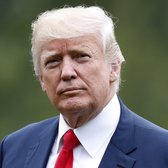Raise tariffs on goods imported into the U.S.
Donald Trump
“Any country that devalues their currency to take unfair advantage of the United States and all of its companies that can’t compete will face tariffs and taxes to stop the cheating.”
Trump-O-Meter

Promise Kept